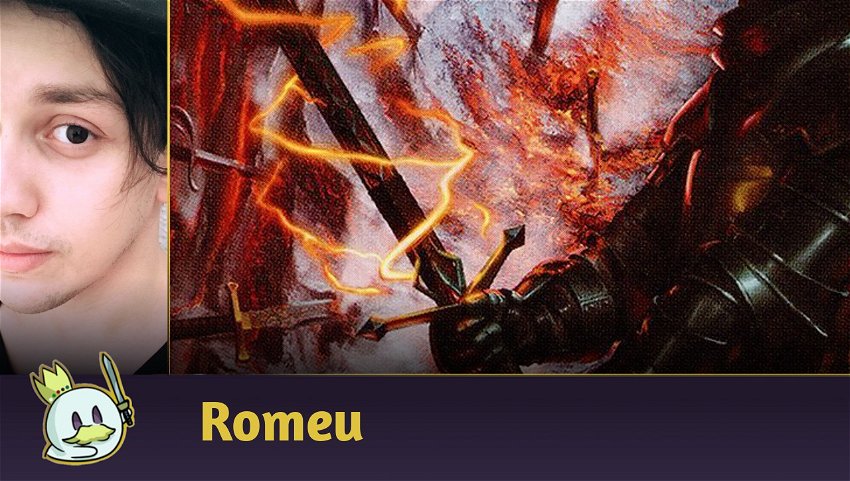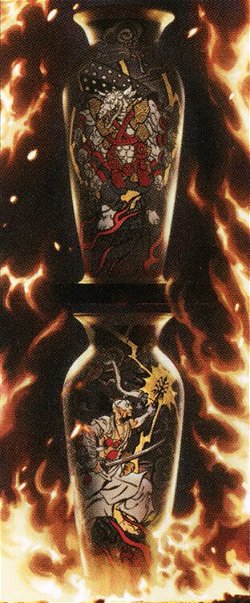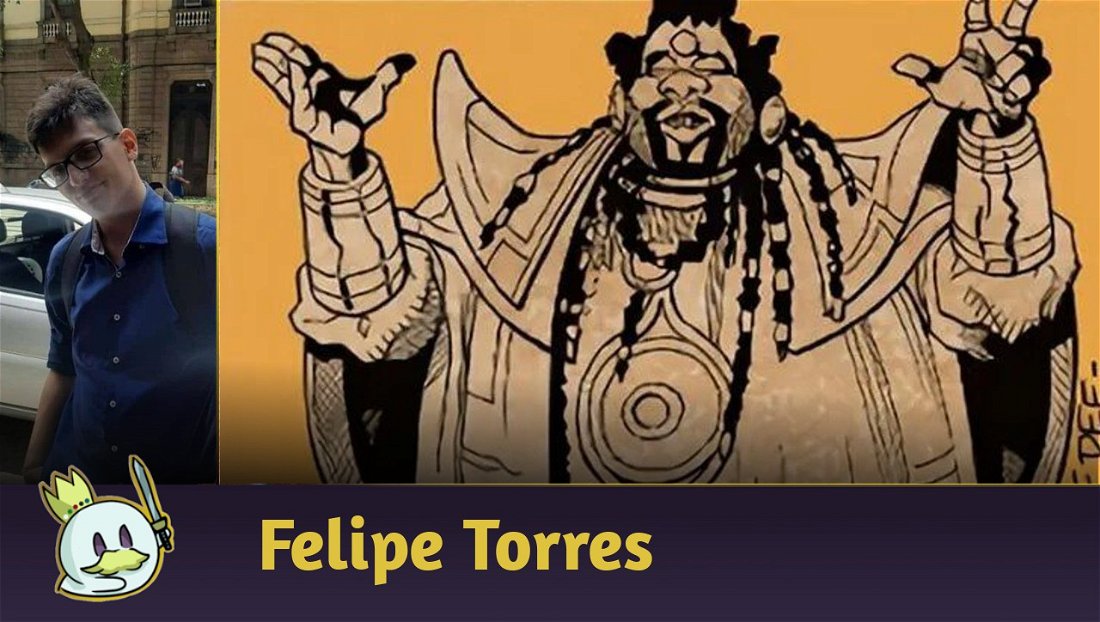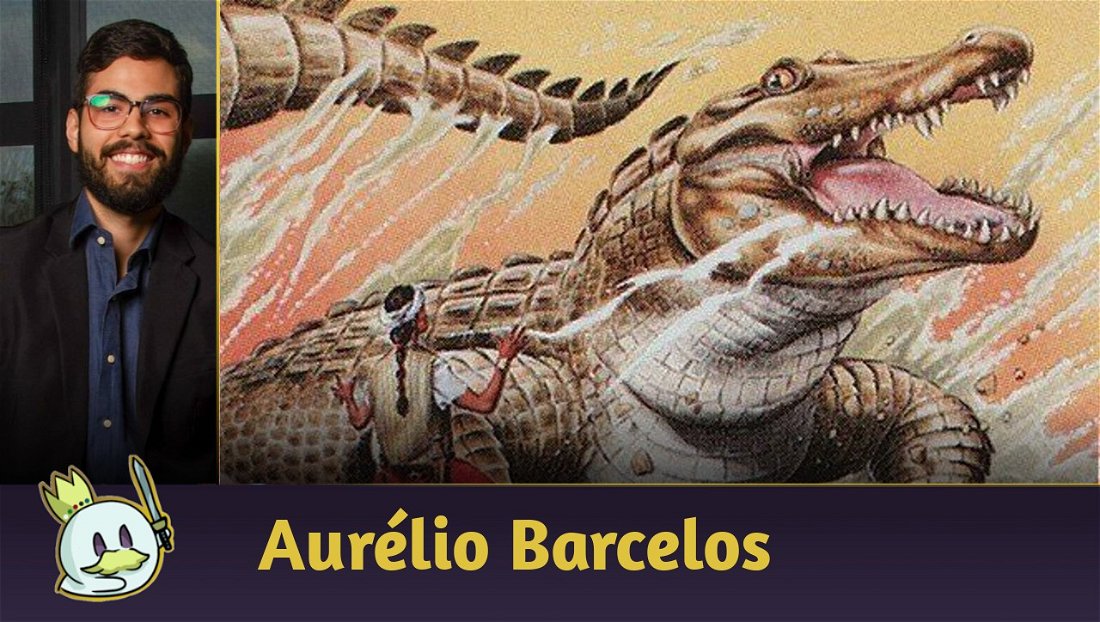With each new release, Pioneer has become more robust and complex, with new strategies emerging as others become less popular, but not entirely absent from the Metagame to the point where they're totally disregarded at a major event.
However, with more and more layers of complexity creeping into the format, often the best option is to care more about sticking to your game plan and focus on striking first, striking hard and with no mercy - and in that regard, Mono Red Aggro is one of the best options available.
The Decklist
As I mentioned above, the goal of this deck is to strike first, strike hard, and with no mercy - just like Cobra Kai teaches us.
Basically, everything on this list focuses solely on the primary objective of dealing the most damage in an unstoppable string of threats turn after turn, with an almost integral focus on the combat phase.
You have one creature on turn 1, you can cast up to two on turn 2, sequence it with Anax, Hardened in the Forge on turn 3, and on turn 4 you're expanding your damage potential with Embercleave or Torbran, Thane of Red Fell. That is, this Mono Red is practically the version that saw a lot of play and was extremely popular during the Theros Beyond Death Standard, but with steroids provided by previous releases.
Maindeck

Our one-drops won't always be impressive, but they help to sequence our plays in the next turns.
Kumano Faces Kakkazan offers a Goblin Guide two turns later, deals 1 damage to the opponent the turn it comes into play and makes our two-drop stronger, significantly increasing the pressure in the following turn.
I had several doubts about using Fanatical Firebrand in place of Monastery Swiftspear - something I do in Explorer due to the absence of it in Magic Arena - but given the format's current context, I believe it is not necessarily a bad option in a format where we need to deal with some one-drops and two-drops with one toughness, like a Mausoleum Wanderer that on the next turn will be enchanted with a Curious Obsession, a mana dork that will speed up the cast of Elder Gargaroth or any other heavier Mono Green Devotion drop, or a Luminarch Aspirant before its trigger resolves and makes it a 2/2.
Ironically, I play plenty of games with Fanatical Firebrand untapped on the draw because of these possibilities, but it's a creature of extreme situations: it excels in games where it really matters and is awful in games where it becomes irrelevant.

Our turn 2 aims to sequence well with our turn 1 plays, but they can end up being counterintuitive to each other, as is the case with Eidolon of the Great Revel and Burning-Tree Emissary since it is impossible to sequence them and one automatically makes the other worse.
However, as our strategy is focused on a "go wide" strategy, I consider Burning-Tree Emissary necessary to sequence another creature on the same turn, or even come accompanied by a Stomp from Bonecrusher Giant, or a Lightning Strike on a potential threat.
To sequence it well with another two-drop, we have Kari Zev, Skyship Raider - which, by the way, is a great play to sequence with Kumano Faces Kakkazan on turn 2 - and offers a hard to block threat for the first few turns, plus two attacking creatures to reduce Embercleave's cost and two red damage sources for Torbran, Thane of Red Fell.
Finally, Eidolon of the Great Revel is often much more punishing for our opponents than it is for us, especially against archetypes that try to sequence multiple spells in a single turn, like Izzet Phoenix and Boros Heroic.

On turn 3, Bonecrusher Giant creates a huge board presence, while having a pseudo-protection that speeds up our clock and also works in various stages of the game like removal and/or burn.
Anax, Hardened in the Forge grows exponentially with the abundance of red mana symbols, is your preferred target for Embercleave, often winning the game on its own. Anax also punishes opponents for killing your creatures by exchanging them for tokens that, despite not being as strong as threats, build up fast and keep the pressure running.

Filling the board with creatures in the first few turns automatically brings us to our payoffs, Embercleave and Torbran, Thane of Red Fell, and we can consider both as our "free-win buttons".
Embercleave is basically a permanent Temur Battle Rage for any creature that stays in play while increasing their power, turning them all into must-answer threats. The mere existence of this equipment in your deck makes your opponents respect your board position and avoid overextending their attacks.
Torbran rewards "go wide" by increasing the damage of all your creatures. With him in play, Fanatical Firebrand becomes a Lightning Bolt with legs, Anax's tokens turn into Rimrock Knight, Play with Fire turns into a Flame Javelin for one mana, etc.

We need some interaction against the opponent, and our best bet is direct damage spells. The numbers can vary depending on the Metagame, but I like a 3-3 split against an open Metagame as they both serve different needs at various stages of the game.

In addition to the basic lands, we also have a number of utility lands to mitigate possible bad top decks, with Den of the Bugbear being the most important, as it offers a creature to attack and build up the clock, as well as adding more resilience against sweepers.
Castle Embereth increases makes our tokens more menacing, Sokenzan, Crucible of Defiance is basically a free inclusion that, in late-game, gives you two more bodies to attack and Ramunap Ruins gives you some extra reach.
Sideboard

Most of our sideboard is made up of removals to deal with problematic and specific situations, especially in games where we are forced to play in a more reactive position, or more oriented towards interaction.
Burning Hands is a decent removal against small creatures, but it stands out as the best way we have to deal with the occasional Elder Gargaroth and the most frequent Cavalier of Thorns.
Redcap Melee is extremely useful in the Mirror Match, but also works decently against Izzet Phoenix and Rakdos Midrange to deal with red creatures and/or kill problematic permanents in exchange for a land, like Thing in the Ice and Kalitas, Traitor of Ghet.
Lava Coil works for any game where you need to kill any large creature and/or exile problematic permanents
Rending Volley deals with Thing in the Ice and Ledger Shredder, but is also useful against Humans and Boros Heroic.

We also have complementary threats and responses for more specific situations: Unlicensed Hearse deals with graveyard interactions, such as against Cauldron Familiar, or Greasefang, Okiba Boss.
Hazoret the Fervent is an extremely difficult to remove against Rakdos Midrange, and Rampaging Ferocidon is a complementary threat that stops our most difficult obstacle - Lifegain - while punishing archetypes that put too many creatures on the battlefield.
Mulligan and Postures
Mulligan

The ideal hand with Mono Red Aggro basically involves sequencing your plays at the right timing without missing a turn, looking to stay ahead of your opponent in and ensuring that your payoffs work whether they are in your hand or come through draws.
While you can ensure a good pace early in the game, there is no specific perfect or ideal hand you should follow from, but it is important to avoid too many copies of three-drops without proactive play in turn 1 or 2, and is preferable to avoid having too many copies of heavier payoffs like Embercleave.
Having an understanding of what you're playing against helps you know what pieces you need to have in your starting hand: games against creatures will occasionally require more interaction, games against Midrange will improve if your threats have some built-in value, and Control will struggle to deal with your pressure if it is too great for them to handle, same goes for Combos.
Postures
You will mostly be the beatdown in Game 1 unless your opponent plays an Aggro deck faster than yours and forces you to spend turns directing removals on their creatures. Usually, you won't be far behind because your creatures will be superior on their own than theirs.
Every time the board isn't empty, consider whether it's worth trading your creatures with theirs or even losing some to deal some extra damage. Normally, it is often necessary to attack and sacrifice a few creatures to pull as much damage as possible and not give your opponent more turns than necessary, but this will naturally also mean making your Embercleave or Torbran worse, and the possibility of having more reach on a subsequent turn can give you more chances to turn the tables in your favor
That said, you should be extremely proactive on the play and try to close the game in a few turns, so you don't have the opportunity to adapt to your pace and start delaying your moves. Often, it's worth keeping up that pressure and pushing your threats towards removal so that more important creatures can come into play at less opportune moments.
Tips and Tricks
> If you expect a removal, don't always equip Embercleave on the most obvious target, as Anax, Hardened in the Forge is the best option - you can choose another unblocked creature and/or that will survive combat and deal some additional damage to attach it to force the opponent to decide whether to deal with a smaller threat that tramples and has Double Strike, or the larger threat.
> If your hand includes Eidolon of the Great Revel and Burning-Tree Emissary, I usually prioritize Burning-Tree Emissary if I have another 2-drop to go with because I spare myself 4 damage on the next turn. Unfortunately, they are counter-synergistic with each other, but Eidolon is a necessary evil in the Metagame.
> Stomp, from Bonecrusher Giant, doesn't allow damage to be prevented this turn. This has a very interesting interaction with Protection from Red and the like, as the damage your creature deals cannot be prevented;
> It's easy to forget, but when transformed, Kumano Faces Kakkazan causes creatures that take damage from a source you control to be exiled, this is especially important against Izzet Phoenix and other recurring threats.
> If my opponent uses damage-based removals, it's okay and even recommended to cast Kari Zev, Skyship Raider on turn 2 if you played Kumano Faces Kakkazan on turn 1 to make it a 2/4 with First Strike.
> Sokenzan, Crucible of Defiance costs 1 less for each legendary creature you control. You have Kari Zev, Skyship Raider, Anax, Hardened in the Forge and Torbran, Thane of Red Fell, as well as Hazoret the Fervent on the Sideboard as legendary creatures. Furthermore, the token created by Kari Zev is also a legendary creature.
> You can play Play with Fire on your upkeep targeting your opponent to get access to a Scry 1. This is very important if you need a specific card to close the game or get out of a difficult situation.
> You can cast one Anax with another on the Battlefield and sacrifice one of them with the Legends Rule to trigger both of them, creating four 1/1 Satyr Tokens.
Sideboard Guide
Rakdos Midrange
IN:

OUT:

Game 1 against Rakdos is basically geared towards a race where you play as best you can with your creatures as they respond with removals and try to create "walls" to block you to the point where you have more creatures than they can handle or pull so much damage that your burns get the job done. If that doesn't happen, they can stabilize the game with Kalitas, Traitor of Ghet or Planeswalkers, and you'll rely solely on Topdeck to deal with them - which gets worse and worse if they have any Lifegain effects in play.
Post-Sideboard, Fanatical Firebrand does very little in this game, and Kumano Faces Kakkazan loses its usefulness when we need to be more reactive to what's on the board. As we added nine cards, I removed one Burning-Tree Emissary, as the other available options are more useful in other stages of the game.
Added Lava Coil and Redcap Melee to deal with troublesome creatures and Planeswalkers. Your main target should be any Kalitas and Sorin, as they offer lifegain. Hazoret the Fervent is a threat they can only respond to with Epic Downfall, and we will likely have an empty hand in a few turns as we trade resources with them or cast creatures. Rampaging Ferocidon not only offers a Lifegain block, it is also a 3/3 with Menace, which makes blocking math difficult and forces them to either remove it immediately or put themselves in a more defensive position.
Even though we have better removals and creatures, we are still the beatdown of the game, and we can't trade equally and follow Midrange's plan because they perform that function better than we do, and we don't have Chandra, Dressed to Kill or Chandra, Torch of Defiance to keep up with card advantage, so stay ahead in the game. Try to avoid spending your removals on unimportant threats just to deal 2 or 3 more damage in the first few turns. Sometimes having a full table is better than putting pressure on your opponent, especially since Rakdos doesn't usually play with sweepers.
Izzet Phoenix
IN:

OUT:

The bad news about this game is that our biggest opponent is Thing in the Ice, and it can just ruin our entire game plan. The good news is that the lists have only been running two copies on the maindeck and one on the sideboard, and despite being a good blocker, Ledger Shredder doesn't set enough pressure on its own.
Here, we need to gamble heavily on the plan to attack fast and try to win before the opponent manages to place two or more Arclight Phoenix in their graveyard, so don't be afraid of losing a creature to Ledger Shredder if that opens up the opportunity to remove it with a Burn or to deal lethal damage to the opponent.
Also, Izzet Phoenix typically spends a few turns simply "doing nothing" other than drawing cards and digging through the deck for birds and removals, and this lack of interaction virtually works like extra turns for you.
We removed Fanatical Firebrand in Game 2 and 3 because it again doesn't do anything relevant, and a copy of Embercleave for being an easy target against Aether Gust or even less common options like Spell Pierce or Disdainful Stroke, and basically added better removals against Ledger Shredder and Thing in the Ice, and graveyard hate against Arclight Phoenix.
However, our game plan doesn't change much, we just prepare better to deal with blockers and advance our game plan. But this time, we need to play better around the opponent's untapped mana so as not to give them a positive tempo at the beginning of the game.
Mono Green Devotion
IN:

OUT:

The match against Mono Green Devotion is a bit bad in Game 1 because it is easy for them to delay our game, generate absurd mana, tutor Shadowspear with Karn, the Great Creator or play Restorative Burst over and over again, and we can never come back. Your best option will be to try to win the race and delay their game by using Fanatical Firebrand to kill the mana dorks and speed up your board position to an irreversible state, but it's not easy and usually isn't how the game plays out.
We have some more important interactions against their blockers on the sideboard, but I still don't think it's a good match because they're too fast for us to keep up.
Our best route remains to play in the race and delay their game. We are often forced to deal with Planeswalkers rather than attacking the opponent if the game goes on, so try to keep hands that can prevent one of them from coming into play too early while still managing to put some pressure on your opponent.
Mono Blue Spirits
IN:

OUT:

We have all the elements needed to interact with their low-cost creatures while moving forward with ours. We usually manage to win in the race unless they have a lot of Tempo plays in the first few turns, while attacking us with a threat enchanted with Curious Obsession, so try to prevent the enchantment from coming into play.
On draw, the game can be a little trickier if you don't have a low-cost interaction, and it's often worth killing their one-drop with Fanatical Firebrand before they can untap on the next turn.
We don't really have much to add in Games 2 and 3, and while we might want to Lava Coil, I don't like the idea of spending my mana on my turn to interact with a list that operates exclusively on Instant-Speed, but you can remove Embercleave to add to the two copies if you prefer, since like Torbran, it's a higher cost spell which forces us to play more around Geistlight Snare and Aether Gust.
Abzan Greasefang
IN:

OUT:

Playing against Greasefang, Okiba Boss decks with Mono Red Aggro is having to play around what your opponent does basically every turn and always having to anticipate the possibility of taking 13 damage and having two 4/4 tokens waiting for the next turn.
We have too few good interactions in Game 1. So, we need to race again to win the first game, and our only viable reactive play option is to save a Lightning Strike if it feels right.
Post-Sideboard, however, we opted for a stance closer to Midrange, where we tried to avoid executing the combo with more Instant-Speed removals, allowing us to better interact with Greasefang while maintaining a proactive stance in the first few turns.
The hardest part of this game is how much you need to play around: if there is a Greasefang in your opponent's graveyard, you need to consider the possibility of a Can't Stay Away. If there is a Parhelion II, you need to consider a Greasefang. If they have two untapped lands, it is possible for them to cast Grisly Salvage, and if it takes too long, they can stabilize the game with Esika's Chariot.
So, we are in a tricky situation, and we need to be cautious between not falling for the bait on the other side of the table and giving them too many free turns or being careless. There are times when it's better to just go to the race.
Conclusion
Mono Red Aggro is a solid option for any player who wants an objective and quick strategy in Pioneer, but which still has plenty of room for Metagame adaptation in post-sideboard games.
It's reliable, proactive, which requires some planning, but also rewards you a lot for just making the right sequenced plays at the right timing with a beautiful "free-win" against unprepared opponents.
If you have any questions, I'll be available in the comments.
Thanks for reading!














— Comentarios 0
, Reacciones 1
Se el primero en comentar